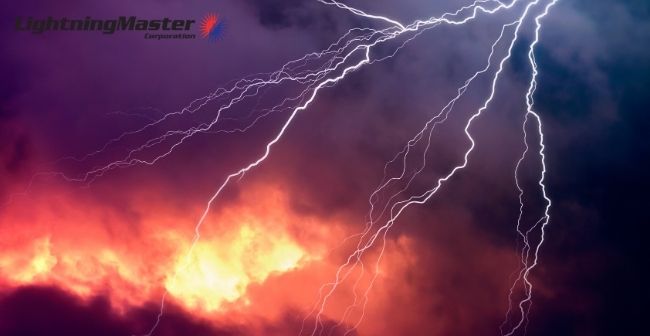How does Lightning Master maintain lightning protection equipment?
Lightning damage can be costly due to damage to critical equipment and potential shutdowns. If there is an existing lightning protection system on your commercial building or at your industrial facility, it is important to know the recommended inspection and maintenance protocol, so your lightning protection equipment remains compliant with current industry standards.
To ensure that your lightning protection system is always at its best, it is important that it be properly maintained by the installation company or a UL certified lightning protection company.
Schedule Regular Annual Inspections
To determine if a lightning protection system is code compliant is to have it must be properly inspected. Lightning protection equipment is extremely durable, but problems can arise with disconnections, corrosion, and add-on structures if it is not inspected. Here is a quick list of situations that warrant an inspection of the system:
- Completion of Installation — Once lightning protection equipment has been initially installed, a full inspection and walk through should be completed for sign off.
- Relocation or moved components — Many contractors work on industrial facilities and commercial buildings. Sometimes disconnections of the lightning protection system need to be made for them to work, but they forget to connect the system back or notify the customer that components have been relocated.
- Damaged Components — Upon visual inspection by the owner (especially near the coast) any corrosion or damage to components will necessitate an inspection.
- Weather Occurrences — The equipment will be checked following major storms including electrical, high wind events, earthquakes, known lightning discharges to the system or other occurrences that may affect the system.
- Disturbed System — If any type of expansion, addition, or other modifications have taken place with the underlying protected structures, the lightning protection system installer should be notified.
- Additions to facility or structures — In the event that the underlying protected structures have been expanded, alterations to the protection system may be required.
- Periodic Servicing — To keep the protection system compliant, scheduled inspections will need to be made.
What to Expect During an Inspection
The inspection of your lightning protection equipment will be thorough, and a report will be submitted with any necessary remediation to bring the system to meet industry standards. If additional material is required, a corresponding quote with a bill of material will be submitted. Here is a rundown of what will be checked:
- System Condition — The overall system will be checked to ensure that it is in good working order.
- Components Condition — Each component will be examined to make sure that it is in good condition and properly attached or connected. Any loose connections that could result in high-resistance joints will be corrected.
- Check for Modifications — Inspection will find if there have been any modifications that require changes to the system.
- Weakened Components — If it is discovered that any components have been weakened by vibration or corrosion, these will be fixed.
- Intact Components — The inspection will check for any severed down conductors or grounding electrodes.
- Securely Fastened — System components and conductors must be securely fastened to their mounting services and protected against accidental mechanical displacement.
- Additions or Alterations — The inspection will analyze any additional protection needs based on additions or alterations to the structure.
- Surge Suppression — These devices will be checked for any visual indication of damage.
- Applicable Standards — The inspection will ensure that the system complies with all applicable standards.
Importance of a Maintenance Schedule
Even when weather is not especially turbulent, lightning strikes can become very dangerous to both structures and personnel. In addition to direct strikes that hit a structure, indirect strikes that are nearby can cause damage to electrical components and critical equipment. Lightning protection systems will help protect your assets, but to ensure the longevity of your system, a maintenance schedule is recommended. This will identify any problems with the system due to the factors listed above, along with any needed changes to the protection system due to expansions to your facility or structure. If a third-party inspection is required, a UL Inspection should be coordinated for a UL Master Label or Letter of Findings
Contact Lightning Master for Lightning Master Equipment
The owner may contract for these services with any engineering or lightning protection company, preferably one that is a UL Certified Lightning Protection System Installer. Or other personnel may conduct these inspections and maintenance. Lightning Master Corporation is a UL Certified Lightning Protection System Installer and offers a program to satisfy the above requirements. If you have any questions about our services or would like to receive a free, no-obligation site survey of your building or facility please give us a call today at (727) 447-6800.


